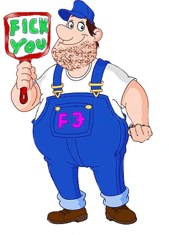|
It is currently Fri May 02, 2025 4:55 pm |
|
All times are UTC - 5 hours [ DST ] |

|
Page 1 of 1 |
[ 14 posts ] |
| Print view | Previous topic | Next topic |
AVIAN 2-180 Duct ... I wish somebody would copy it
| Author | Message | ||
|---|---|---|---|
|
|
.
I love the duct and tail assembly on the AVIAN 2-180 Gyroplane. Wish someone would copy it on a homebuilt gyro The engineer said it increased static thrust by 50% which was great for takeoffs Produced 1200 pounds thrust from 200 horsepower. And it looks fantabulous .... like something Gabor would invent !!!! . You do not have the required permissions to view the files attached to this post. |
||
| Fri Jan 22, 2016 9:38 am |
|
||
|
|
.
Rear view . You do not have the required permissions to view the files attached to this post. |
||
| Fri Jan 22, 2016 9:39 am |
|
||
|
|
.
Side & Front & Rear 1/4 view . You do not have the required permissions to view the files attached to this post. |
||
| Fri Jan 22, 2016 9:42 am |
|
||
|
|
,
Interesting discussion on the duct at 1:34:10 in the video .... the engineer said it increased static thrust by about 50% = 1200 pounds of thrust from 200 horsepower .. Some discussion about engine/prop torque at 29:00 .... the Avian prop turned CCW so they turned the main rotor clockwise and the stick remained centered in flight . They used Enstrom blades turned upside down because of the twist .... engineer said straight blades would have been best but none were available back then (1963) Some discussion about CofG requirements for certification at 48:00 This whole video is very interesting .... once you get to the end of the 2 hours you will wish it was even longer !!!! Video courtesy Jerry_Forest from the Toronto Chapter Thanks Jerry !!! . |
||
| Fri Jan 22, 2016 9:58 am |
|
||
|
Joined: Wed Nov 06, 2013 5:21 am Posts: 7162 Location: Lost Has thanked: 115 times Been thanked: 8681 times |
That is very cool, can you imagine if it had retractable gear, that would be slick....
With todays composite technology, that would be cool. _________________ It's never too late to be a bad example. I spent all my money on Bikes, Broads, and Booze, the rest I wasted. |
||
| Fri Jan 22, 2016 10:17 am |
|
||
|
|
Im left wondering about in flight side wind handling characteristics. Thats sure seems like a lot of sail area out there.
Agree with senor elswood, with todays building materials it would be fantastic for a comeback. Im still waiting for my personal fav, the Fairey Rotodyne. I honestly believe it could be the answer to todays high cost of helo transport near cities. |
||
| Fri Jan 22, 2016 12:02 pm |
|
||
|
|
Henry Bowman wrote: Im left wondering about in flight side wind handling characteristics. Thats sure seems like a lot of sail area out there. Agree with senor elswood, with todays building materials it would be fantastic for a comeback. Im still waiting for my personal fav, the Fairey Rotodyne. I honestly believe it could be the answer to todays high cost of helo transport near cities. A couple of years ago somebody (like Chuck Beaty or Doug Riley) said there was more square feet of side area on the rear fuselage than the front so it should weathervane just fine and never flip ends. The straight-on side-view shows the duct has a lot of surface area plus the rudder sticks out behind that too. Agreed on the Fairey Rotodyne ... even for the military ... it could fill the gap between typical helicopters and the Osprey and would cost less to build , it is simple technology , even if it was noisy the army wouldn't care. On the first AVIAN they used compressed air tips to spin the rotors but abandoned the idea because of air storage limitations. They also wanted the compressed air as a backup in case the engine quit during a jump takeoff , they would turn the air on and make a safe vertical landing ... the Avian had a collective they could use for zero speed landings. The compressed air idea did not work very good so they went with a mechanical prerotator . |
||
| Mon Jan 25, 2016 1:35 pm |
|
||
|
|
.
Most of all I think this design would be perfect for Solving torque issues Along the lines of the tall T-Tails And the Aviomania with their variable incidence horizontal tail And the Cierva torque - counteracting tail . I would install a couple of slender horizontal airfoils in the duct with opposite incidence to counteract the torque plus reduce the screw shaped air coming off the prop C. Beaty says if you straighten out the propwash it removes most of the torque. Besides , it would be the nicest looking tail appendage on any gyro in the world. . You do not have the required permissions to view the files attached to this post. |
||
| Mon Jan 25, 2016 1:54 pm |
|
||
|
|
.
The following is from Chuck Beaty ..... --- Aerodynamic vanes in the propeller slipstream can generate a torque against the airframe that is exactly equal and opposite to propeller torque, producing cancellation. --- A single propeller, in order to generate thrust, also must rotate its slipstream. The slipstream coming off a single propeller is a miniature whirlwind. --- If aerodynamic vanes in the slipstream of a single propeller could remove the whirl and produce a non-rotating slipstream, the force of the slipstream against the vanes would exactly balance torque. --- That’s what differential incidence of a horizontal tail located in the propeller slipstream does. --- Even a full span surface such as a Dominator tall tail without differential incidence produces partial straightening and considerable torque compensation. It’s good enough for the smaller 2-stroke Rotax engines. --- Simply placing the main wheels of a gyro on bathroom scales with the tail tied to a tree and adjusting tail plane differential for equal readings at each wheel should remove all doubt about torque balance. . |
||
| Mon Jan 25, 2016 5:20 pm |
|
||
|
|
I have used ducted fans and props for many years and I have serious doubts about a real world fifty percent increase on that duct, you have to consider the weight of the duct which has to be carried by the rotor, the drag of the duct , my first experience with ducts was on a canahover hovercraft, I had been told about the improved performance over open props but I had to remove them to work on the thrust engines and it was a pain to take them off and on I decided I would test the engines for a few hours before reinstalling the ducts, I would just live with the reduced performance, I was shocked with the improved performance and never put them back on .
Norm |
||
| Mon Jan 25, 2016 11:17 pm |
|
||
|
Site Admin Joined: Tue Sep 02, 2014 7:45 am Posts: 10144 Location: Poona, Qld, OZZY Has thanked: 21980 times Been thanked: 6259 times |
Unless you are trying to make the props really small, anything that a duct can do, can be done with the tips of the prop.... all you need to do is stop the flow of air over the tips of the prop... that can be done with fine tolerance gaps between fan tips and cowl.... but 1/8" gap negates any gain.... if you have a prop with a P tip or something that stops the air flowing over the tips, you have basically equal to an enclosed fan, without the tiny clearances required....
just choose your prop tip designs wisely       _________________ I do all of my own stunts..... most of them are even planned! Ok, Ok.... some of them are planned.. If electricity comes from ELECTRONS, then surely morality comes from MORONS?? |
||
| Tue Jan 26, 2016 5:23 am |
|
||
|
|
I think part of the problem on that hovercraft was the tip seal system the tip ran in a foam lined groove for a perfect seal but it made the prop almost two inches shorter.
The rotor head looks a bit like a bearing less three blade hub that I built back in the seventies, are there any closeup photos of it? I would like to see if we were thinking alike to simplify a three blade head Norm |
||
| Tue Jan 26, 2016 7:20 pm |
|
||
|
|
phantom wrote: I think part of the problem on that hovercraft was the tip seal system the tip ran in a foam lined groove for a perfect seal but it made the prop almost two inches shorter. The rotor head looks a bit like a bearing less three blade hub that I built back in the seventies, are there any closeup photos of it? I would like to see if we were thinking alike to simplify a three blade head Norm Flexible stainless steel strap pack along the lines of the Hughes 500 , flap and feather but no lead-lag hinge Gord hunt in the 2 hour seminar video above holds it up at one point and talks about it. Great video , after 2 hours I wished it was longer. Gord and another engineer also mention the 50% increase in thrust they got by using the duct. A few years ago I did a RWF thread on the HUGHES 500 Bearingless Rotor Head ... I still think it is one of the best and simplest rotor heads made. Take your flat stainless feeler guages out of your toolbox , grab a stack of 10 of them and you can bend and twist them with ease ... same idea as the Hughes , and they are incredibly strong yet low cost. Thin stainless is difficult for home builder to cut and shape and make the holes ... find a shop that can punch them once you have a pattern http://www.rotaryforum.com/forum/showthread.php?t=16071 . |
||
| Wed Jan 27, 2016 12:15 am |
|
||
|
|
.
Still more AVIAN stuff to come here http://www.rotaryforum.com/forum/showthread.php?t=41075 but have to dig it out. I hope to unearth drawings of the rotor head. All I have so far is from pictures and it doesn't show much By the way , Jerry Forrest from Toronto has convinced AVIAN engineer Gordon Hunt to join the forum and answer questions. So make a list of anything you can think of. The root end of the flexible strap pack is also hinged for flapping , no lead lag hinge , the flex pack is mostly for changing collective pitch without needing bearings . You do not have the required permissions to view the files attached to this post. |
||
| Wed Jan 27, 2016 12:54 am |
|
||

|
Page 1 of 1 |
[ 14 posts ] |
|
All times are UTC - 5 hours [ DST ] |
Who is online |
Users browsing this forum: No registered users and 209 guests |
| You cannot post new topics in this forum You cannot reply to topics in this forum You cannot edit your posts in this forum You cannot delete your posts in this forum You cannot post attachments in this forum |
